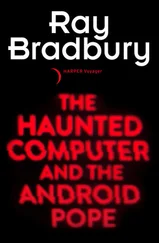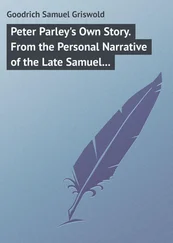A few years previously, I had helped build a little ski chalet in Fryeburg, Maine, for my parents, and after making the arrangement with American Express, I fantasized that I could live in the chalet alone, deep in the woods, writing every other day and skiing the rest of the time. I had no worries about my ability to turn out the textbooks, which by nature had a prescribed format. And they weren’t my first books, either—in college I had written a beginning Swahili textbook for a small publisher.
At first, the fantasy turned out to be a perfectly workable arrangement. I finished the books and skied a lot. But in time got bored with this routine, too. Although I like being alone and am a serious bibliophile and daydreamer, I was developing a bad case of cabin fever. Because I had always enjoyed being a student, I decided to return to school, this time to try or a law degree. The only two places I knew were Iowa and Harward, so I applied to the law schools at both universities.
Law school is one of the few graduate programs that one can get into without prerequisites (the only other one is business school, and I had no interest in business). Apparently my eclectic background was just what Harvard Law School was looking for, so I returned to Cambridge in 1972 and spent the next three school years at Harvard Law School attending classes and playing a lot of basketball; I spent the summers in Maine building houses, which I then sold to pay for law school. It was my first entrepreneurial endeavor, and although at first I learned a great number of ways to lose money, I eventually achieved my goal of making enough to help finance the completion of my studies.
After my graduation from law school I worked at a large law firm in Chicago. After three years, I quit the firm and moved back to Maine, where I set up my own office as a means of obtaining the general kind of experience a private practice could offer. I also planned to build houses in some entrepreneurial way while running my law practice. I ended up with a partner in the law practice and another partner who built houses with me.
In 1978 I obtained the TRS-80 to help with my law practice and (mostly) to have fun. It was then that I was drawn more and more back into programming. I continued to practice law, but eventually the housing recession depressed my construction business. Having a computer and some time on my hands, I began to develop my first game program, Galactic Empire, and before I knew it I was once again seduced by the sheer enjoyment of working with a computer. By the time I sent off that first program to Adventure International, The Software Exchange, and Cybernautics in hopes that they would publish it, I realized that I was looking for a way out of the law business and into the freelance microcomputer programming business.
As I recounted in the first pages of this book, my trip to Eugene, Oregon, in early 1980 eventually turned into the beginnings of Brøderbund. Gary was twenty-eight and I was thirty-two when we started the company. We still remember fondly those early frantic days of cassette recorders strewn about the living room of our house in Eugene. We recall not only the laughably casual way we did business then, but also the raw excitement we felt starting out on this crazy futuristic adventure. We did everything on the basis of instant decisions and ten-minute negotiations. Although many of the friendships and alliances we formed in those days are still part of our business, our business has changed considerably and has become more professional over the years. But back then, we did everything in a seat-of-the-pants manner.
Once, we found a printer in Eugene and said to him: “We don’t have any money, but if you print up this documentation we think we’ll be able to sell the program and pay you later.” We must have looked honest, because the printer took us up on our offer, and the arrangement worked out, miraculously, just the way we said it would. The printer’s name is Don Fast, and although we are no longer in Eugene we still do some business with him when we can.
Although by 1980 three companies in particular— Personal Software, Microsoft, and MicroPro—were on their way to establishing themselves as multimillion-dollar enterprises, it was still a time when most of the microcomputer software “industry” consisted of kitchen table operations like ours. And those were the days when most of the companies got together once a year in San Francisco for a strange kind of convention that was more of a cult-gathering and social get-together than a serious trade show like the huge ones we see nowadays.
Shortly after we got that first $300 order from the Program Store in Washington, D.C., Gary and I decided to attend the San Francisco convocation that we had heard so much about from other microcomputer folks. The event was the West Coast Computer Faire, and a week before it was scheduled to start, we called Jim Warren, the organizer, to see if we could get in on the action. For $200 we obtained a tiny space known as a “microbooth.” In an excess of optimism we recorded almost a thousand copies of each of my TRS-80 programs, of which there were now three. We loaded the trunk of my car with sleeping bags, computers, and cassette tapes and headed for San Francisco in April 1980.
I remember that we arrived in the Bay Area on one of those clear, beautiful, days that seduce people into moving to northern California. Mount Tamalpais was a soft green, the bay was deep blue, San Francisco itself was a sparkling white, and the air was clear enough to see the treeline of the Marin hills from the Bay Bridge.
We crossed the bridge in high spirits, feeling very much in the tradition of the forty-niners and all the other half-crazy adventurers who had come to California in search of their fortunes. We headed for the auditorium where the Faire was held and found our booth, the size of which justified its name—six feet by six feet. In that rather restricted space we set up our TRS-80 and our newly purchased Apple on the fold-up table we had been provided. That was our entire hardware base and most of our capital investment at that time.
We had bought the Apple a week before the show in order to demonstrate my brother Don’s game Tank Command. Don was married and employed as an associate professor at the University of Iowa, so he wasn’t interested in moving west or switching careers in order to join Gary and me in our new enterprise. But he, like a great many others, was fascinated with the capabilities of the Apple II. He had originally created Tank Command for the Plato educational system and had later converted it for the Apple. His game and my three TRS-80 programs were Brøderbund’s entire software line, and at the Faire, Gary and I had high hopes of selling many copies of all four programs in no time.
But unforeseeable events at the Faire ended up having more of a profound impact on Brøderbund’s future than the events we had expected. Initially, we were just thinking about selling a ton of software and learning what all the big companies were up to. After the first couple of hours and no sales, however, we were hoping for enough cash to cover the cost of the microbooth. We had as yet no sense of community with any of the other companies at the Faire. As it turned out, our introduction to the community was literally right next door to us.
Our long-standing relationship with Japanese software companies started because the fellow in the booth next to ours didn’t have an Apple. That booth was owned by an accountant named Jack Hatfield, who lived in Placerville, California, in the Sierra foothills, and who imported memory chips from Japan offering packages that allowed people to upgrade the memory capacity of their computers. In the booth with Jack was a memory-chip supplier, a fellow named Mioshi, who was the president of a Japanese trading company. In addition to the memory chips, Mioshi had also brought to the Faire a couple of Apple arcade-type games that he had picked up in Tokyo from a company called Star Craft.
Читать дальше










